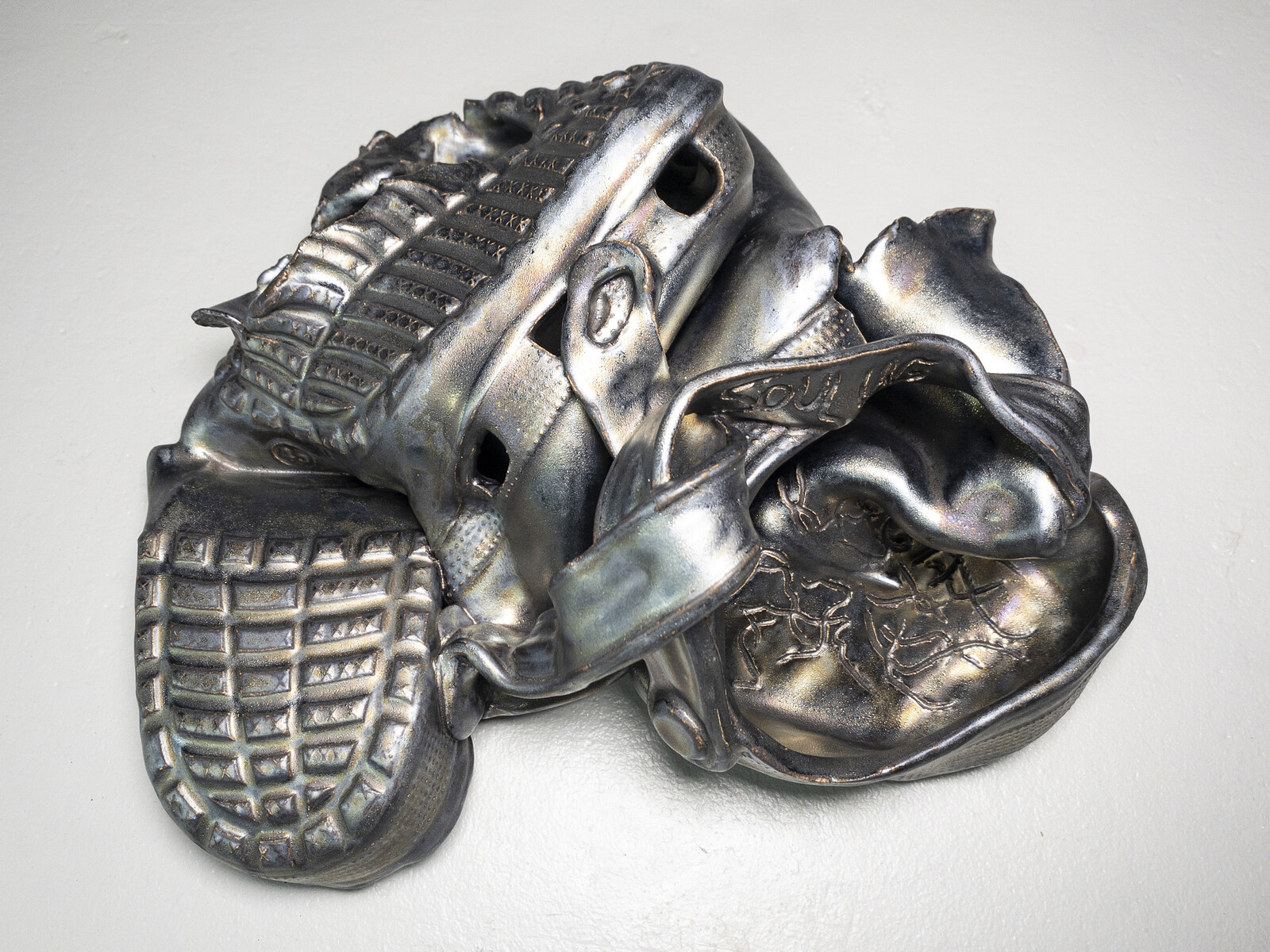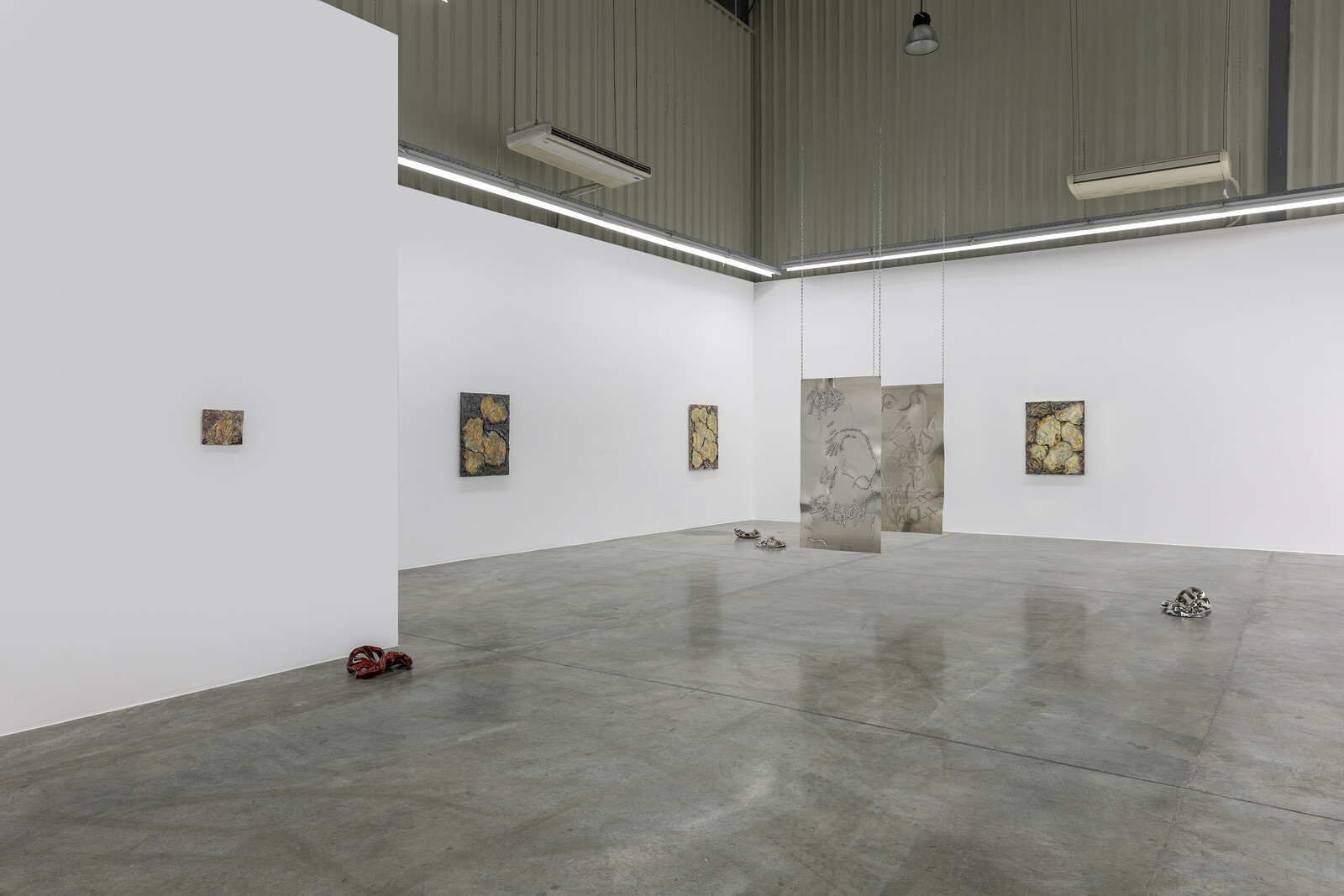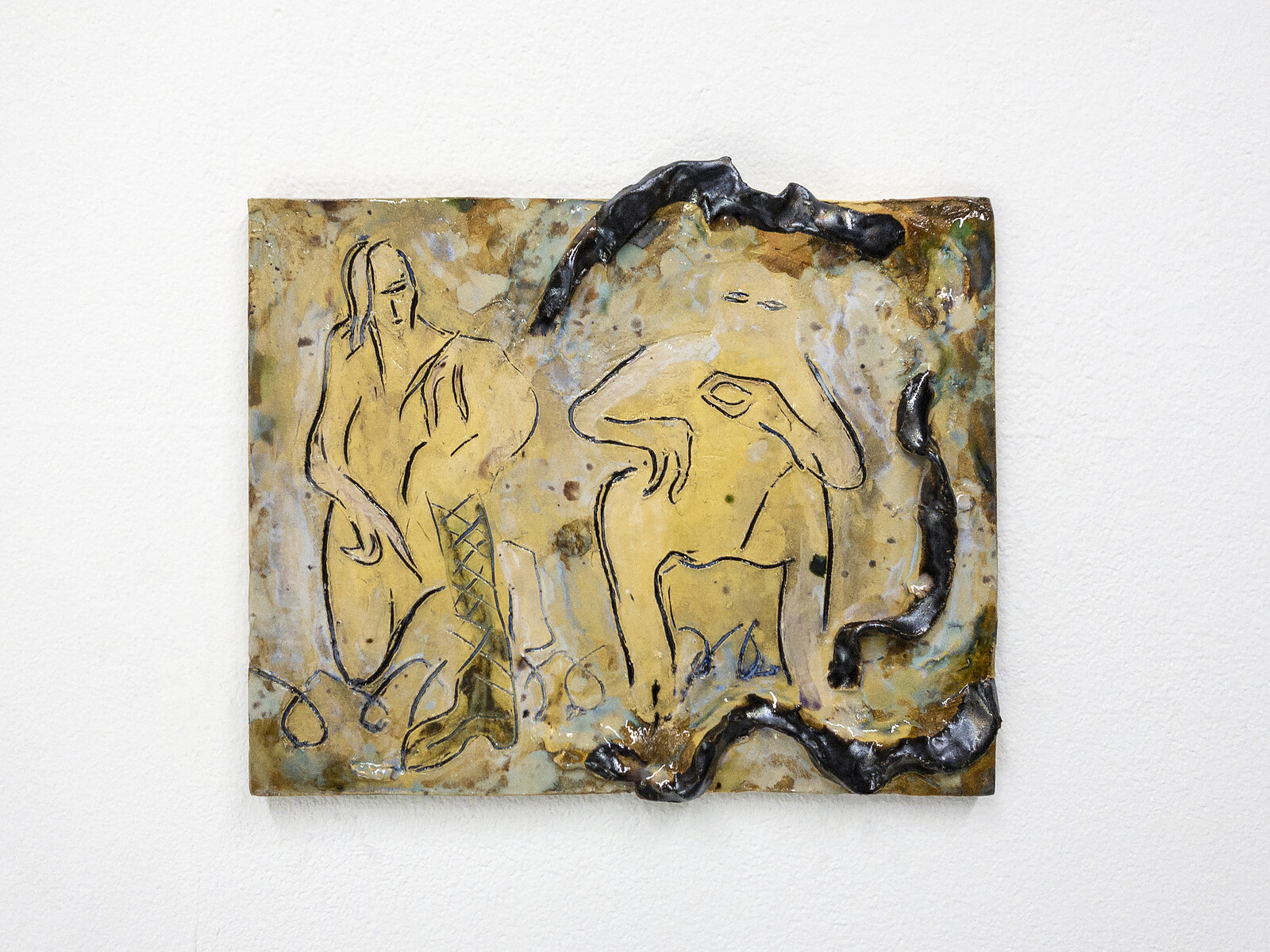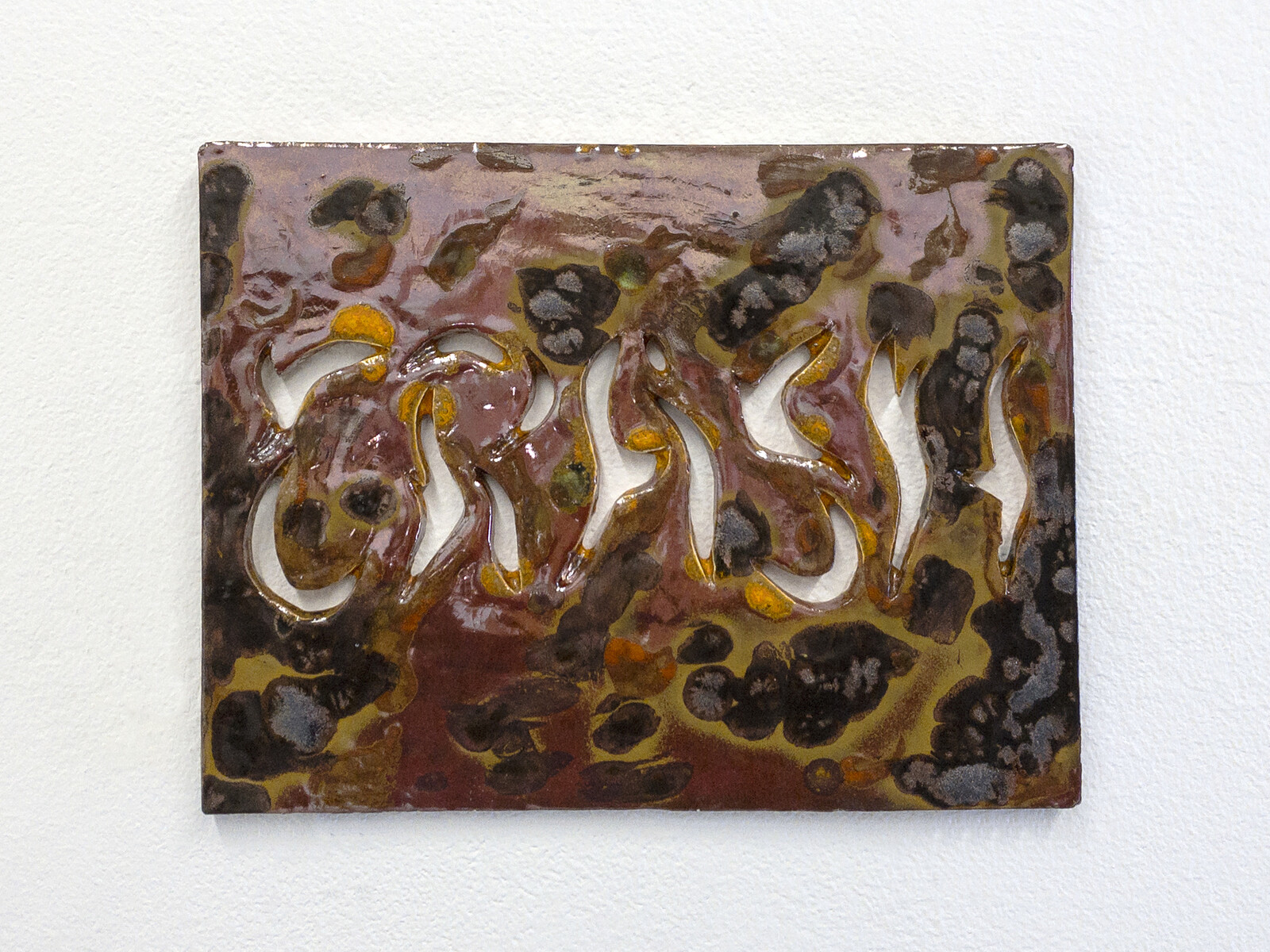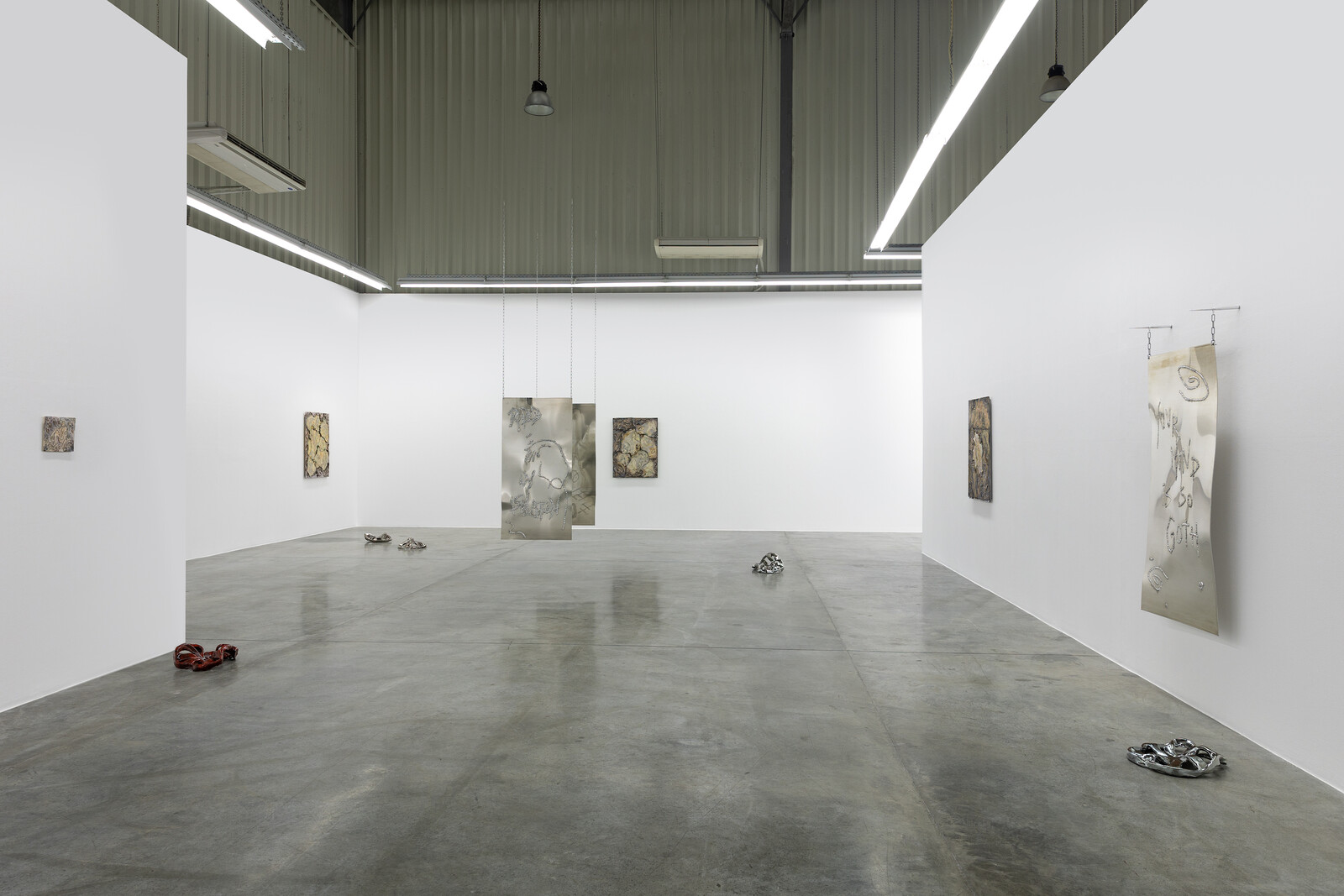We knew that the onslaught of pandemic art was coming. In Monika Grabuschnigg’s “Razed in Isolation,” it arrives by way of parable. Here, the cataclysmic disaster is the most powerful volcanic eruption ever recorded: Mount Tambora, Indonesia, 1815. Volcanic ash blocks the sun, changing the weather and affecting crops on the other side of the world. Things, as the Spice Girls once sang, would never be the same again.
At least, according to the exhibition text. This narrative plays out obliquely across a series of flat ceramic works, which are installed on the walls alongside aluminum panels and gnarly, gloopy tire rims. Loosely articulated nude figures cavort across glazed lavalike rocks, all overlapping limbs and orifices and doggy style. It later occurs to me that this kind of thing is probably a bit risqué here in Dubai. The skin tones on view resemble the shade range of a makeup counter up until a few years ago: alabaster, peaches-and-cream, golden, and—other. This is definitely the kind of cinematic event in which all the people of color die first.
The largest works suggest volcanic activity of a different kind, namely the plate tectonics of early geologic time. In works like Rite of passage (2020), continent-like slabs fit together to form a single pangaeaic landmass, beige against a dark primordial sea that seems to vibrate with worms or eels. These black shapes writhe suggestively around the bodies in smaller single-tile works, in the manner of swans in an odalisque painting, or, in Moonshine elation (2021), deflated leeches. Serpents, perhaps?
This is no prelapsarian Eden, however. And if this is an orgy, it’s a rather desultory one. Many of these figures sport knee-high boots or crosshatched calves that invoke whalenet tights, and they lounge against tiled walls and floors. Some of the interiors have framed paintings hung on the walls, suggesting an art show staged in and around a swimming pool. In Whisper drops in italic (2021), the viewer spies on the figures through an opening in a tiled wall that’s less peephole and more the product of a fist sent through drywall. More than anything, the figures exude the languid ennui of our current technological age, when all the devices are on the fritz and the internet is down forever.
Two large aluminum panels hung on chains from the gallery ceiling, and another on a wall, add to the postindustrial vibe. Fragments are scrawled onto them with the crusty, carbuncled burr of what looks like a welding gun, suggesting sandwich boards that have lost their other halves. The phrases have a real “Live, Laugh, Love goes to Hot Topic” energy: “CHAOS OF HARD CLAY,” “RAZED IN ISOLATION” and, most tryingly, “YOUR MIND IS SO GOTH.” Is the volcano a kiln here? I think they are supposed to be edgy, but it’s hard to tell. As isolated works, they’re corny as hell, but as a series they provide a magnificent material contrast to the ceramic works.
Dispersed throughout the space are what initially appear to be Dali-esque melting metallic hubcaps, but are in fact more glazed ceramics. Their names are variations on the formula Crash (Simulation) (2020), with one gorgeously red one, burled like walnut wood, named Speed Flower (2021). Because of course—what is a smoking wasteland dystopia without some Mad Max-style set dressing? I begin to feel like this is clever marketing for the newest action film, that one of those deep, boomy announcer voices is going to blare out at me any second. Coming this fall: VAXXX HORIZON, or something like that. Is this what we have to look forward to: the new new normal? Contact not for desire or pleasure but, as the louche figures in the ceramics suggest, contact for the sake of contact?
One last work, titled Timeworn spirits (diluted fate #2) (2021): a pair of ceramic Birkenstocks (or other sensible-looking sandals) are mangled as if by extreme heat. The word SOUL LAG is carved into one strap, and the orthopedic heel bed is filled with exorcism oil, a fiberglass wick and—during the opening—fire like a Diwali lamp placed near the door.
I’m thankful there are no representations of spiky molecules. No PPE, no syringes, no breathing apparatuses, and definitely no masks. And visually, it’s a beautiful material exploration of a show. The exhibition text quotes from several authors and poets—Han Kang’s The Vegetarian (2007), Ursula K. LeGuin’s “The Marrow” (1981), Lord Byron’s “Darkness” (1816), the Bible—without ever quite cohering into a bricolaged narrative, but that seems to be beside the point. Here is one small sampling of the annals of disaster literature. So many more will inevitably follow, and so too will pandemic art. I find myself thinking of Stéphane Mallarmé’s line that there “is no explosion except a book,” and of Maurice Blanchot writing simply, “The disaster: inopportune.”1
Maurice Blanchot, The Writing of the Disaster (University of Nebraska Press, 1986), 7, 13
